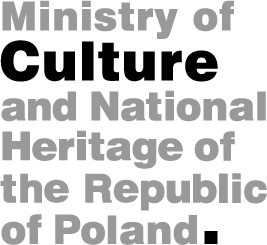|
|
traces of memory Włodzimierz Fiszer page 6 (one of the "councillors" of the T.of Lidzbark) [illegible] solution of this problem having 20 marks in his pocket (=40 zlotys). I believe he managed to solve the issue perfectly well because when we met again at the meeting place near our coach and asked him to borrow me a few pfenigs for postcards (I didn't take German money), it turned out he had no pfenig left on him. Well, judging by his good mood solely I drew a conclusion that German "Starke" is much stronger than 70%, which supposition was confirmed by my merry neighbour – when asked about the issue – confirmed with full confidence and expertise of the topic. However, he confessed to me very cordially and sincerely that "gosh! I did not give them any Polish money, only those... you know... Evangelical stuff... nor did I enter any German restaurant, only Polish ones... I know them people here well!" Only one thing disturbed him, namely the "calculation" because, having travelled a dozen or so kilometres in fresh air by our coach, he turned to me with a sigh "Well, for 40 zlotys, I could have visited more restaurants in our country, in Poland..." We left Neidenburg at 13:30 towards the Town of Hohenstein, as a consecutive stage of our excursion. The road was still first class, however the width of its surface (often tarmac- or tar-covered) made it difficult now for two coaches to go past each other, while the traffic here today (26.VIII) on the 20th Anniversary of the famous and most fierce German-Russian fights under Waplitz and Tannenberg during the Great War was extremely enlivened; it was not only masses of people from East Prussia but the entire German Reich arriving here to Waplitz and, first of all, Tannenberg page 7 where in the place of (illegible) "a national memorial" (Nationaldenkmal), similar to a fortress, built when the Marshal Hindenburg was still alive, the Marshal's body was laid a few days ago. The intensity of traffic on the road to Tannenberg reminded me the automobile traffic on the main arteries in large cities on that day like Lvov or Cracow. Sudden turns and dodges which the fast-moving cars had to make to avoid collision made our company of the "ship on wheels" involuntarily take up the topic of road safety and binding regulations in this field. It was mentioned that probably all of the countries, save for England, have a right-hand traffic. This was also an allusion to our driver who demonstrated a peculiar keenness on "emotive swagger" in driving and mocking disregard of any regulations in the world whatsoever; feeling probably unsafe at the edge of the road, close to the trees alongside, he preferred driving precisely in the middle of the road. Germans were infuriated by this behaviour of his, especially a young Nazi follower in a uniform who followed us on a motorbike and suffered some trouble because of our chauffeur because he either did not hear or pretended not to hear his requests to move to the right-hand side and let the motorbike take our coach over properly. Finally, the despaired Nazi man ran a risk to pass us on a narrow left-side passage, swearing loudly; when he finally found himself in front of us, he rose his fist upwards and shouted something extremely moved, of which only a few words reached us: Rechts!-fahrt man!! near Waplitz, we had to drive very slowly because masses of people swarmed not only the nearby squares in the vicinity of the huge military cemetery, but the road itself. The serious mood of the moment did not, however, collide with humour hear as pretexts for either of them occurred next to each other page 8 – namely, there was the cemetery of the fallen on the one side of the road and the entire heaps of beer barrels on the other. The big white cross, from ferro-concrete, being c. 20 metres high, surmounted the cemetery trees, being visible from distance. The enormous cemetery, visited by thousands of crowding people today, is kept in exemplary way, there is no single grave where there would not be a bunch of fresh flowers. The number of definitely Polish names, ended with the "~ski" ending visible among the names of the fallen, carved in wooden crosses, definitely proves that Poles played an outstanding role in the battles which took place in this area. On entering the cemetery, one can see a memorial plaque, decorated with flowers and sinking amidst ribbons in national-socialistic colours with a swastika and black-white-red colours of Imperial Germany. The inscription of the plaque says: „An diese stelle verblutete am fruhen Morgen des 28. August 1914. im Angriff aus Richtung Allenstein 4 Infanterie Regiment- gegen die 8 russischen Division”... "... the numbers of lost lives are given here – a few commanders and more than eight hundred soldiers. Having left the cemetery, we make for the main goal of our excursion – Tannenberg. At last we leave the Town of Hohenstein behind us, where the intensity of automobile traffic has increased so much that police reinforcements must regulate the traffic, so the massive figure of a German policeman in a green uniform and a cap-helmet of the same colour appears at every turn and on every square. The uniforms of the police are very (Sic!) |

|
|||
| |||||
